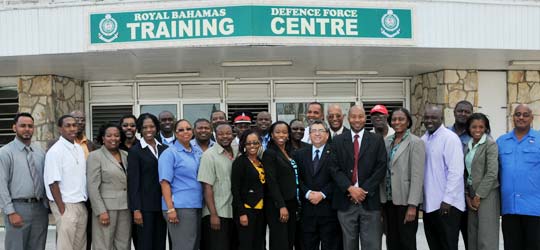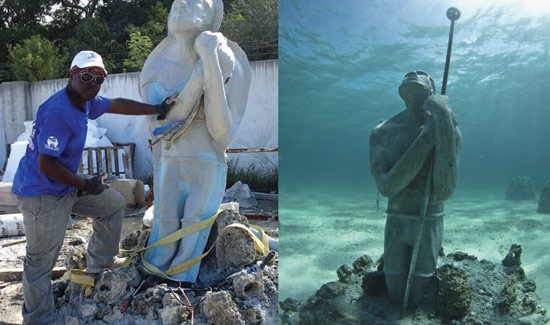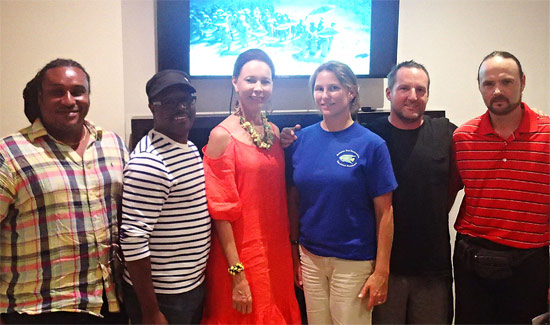
NASSAU, The Bahamas – The National Emergency Management Agency, NEMA, hosted a two-day workshop to formulate a Tsunami and Other Coastal Hazards warning System Protocol for The Bahamas. The seminar was held March 3 – 4, 2011 at the Royal Bahamas Defence Force Base at Coral Harbour.
Facilitators were Dr Virginia Clerveaux, senior programme officer and Arturo Lopez-Portillo, consultant, from the Caribbean Disaster Emergency Management Agency (CDEMA). Captain Stephen Russell, Director of NEMA stressed the importance of the country having in place an early warning system, in the event of a tsunami or any other coastal event. The protocol will be presented to Cabinet for approval and implementation.
“The thing is we want to notify the Bahamian public as soon as possible, as The Bahamas is challenged because of its geographical location,” Captain Russell said. He was delighted CDEMA and sponsor; the Australian Government (AusAID) was able to stage the workshop, a series being conducted throughout the Caribbean.
Dr Clerveaux said it was a pleasure for CDEMA to be a part of the workshop that sought to enhance the capacity of its Participating States, to build capacity for better management of both natural and technological hazards but specifically to tsunami hazards. The workshop provided participants an opportunity to revisit disaster risk management strategies; share best practices and lessons learnt from a cross-spectra of projects, programmes and policies; and an opportunity to highlight the critical importance of building resilience to disaster risk in the communities.
Participants comprising representatives of NEMA’s emergency support function groupings, were able to project their input into a model from the Turks & Caicos Islands protocol, and adapt it to fit The Bahamas, should the country be faced with a tsunami or storm surge; and formulate specific strategies to educate the public at large on the importance of being prepared and where to “find the highest point” once the warning has been sounded. A session also dealt with the role the media plays in informing the public through various means such as TV, radio and the newspaper.
It was concluded that the mass media has “a fundamental role” to play in making disaster risk reduction efforts successful. From CDEMA’s perspective, the workshop also provided an “important opportunity and platform which allows us to build on alliances that have already been forged towards a collective vision for the reduction of disaster risk and promotion of sustainable livelihoods, economic and social progress particularly within our coastal communities which has been the disproportionate focus of our economic and social activities as well as infrastructural development,” Dr Clerveaux said.
During her presentations, she highlighted aspects of the disaster risk profile of the Caribbean region, which is largely comprised of Small Island Developing States (SIDS) located within an active seismic arc.
The impact of disasters on these states leave massive destruction and overpowering evidence of how poor planning and investment decisions contribute to vulnerability and increase the risk of future disasters, she noted. Scientific data has documented evidence of giant waves throughout the Caribbean from as early as 1629.
The NOAA Geophysical Data Centre reports that the Caribbean Basin has had eight percent of the world’s tsunami events and the Indian Ocean seven percent; taking into account the December 2004 tsunami which killed more than 250,000 people by drowning.
“Experience has shown that the most effective response mechanisms to disaster loss reduction has proven to be a dynamic, multi-level management arrangement in which national, regional, government and non-government actors work together in a timely, effective and mutually-enhancing way,” Dr Clerveaux said.
BY THE NATIONAL EMERGENCY MANAGEMENT AGENCY



